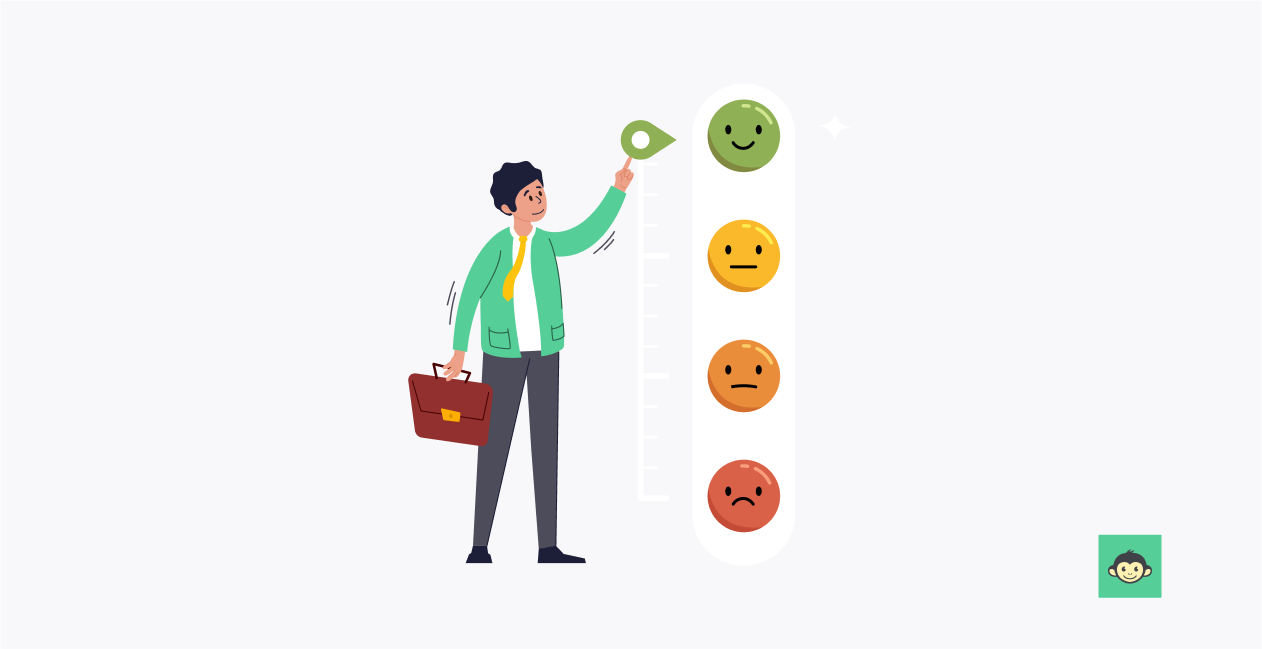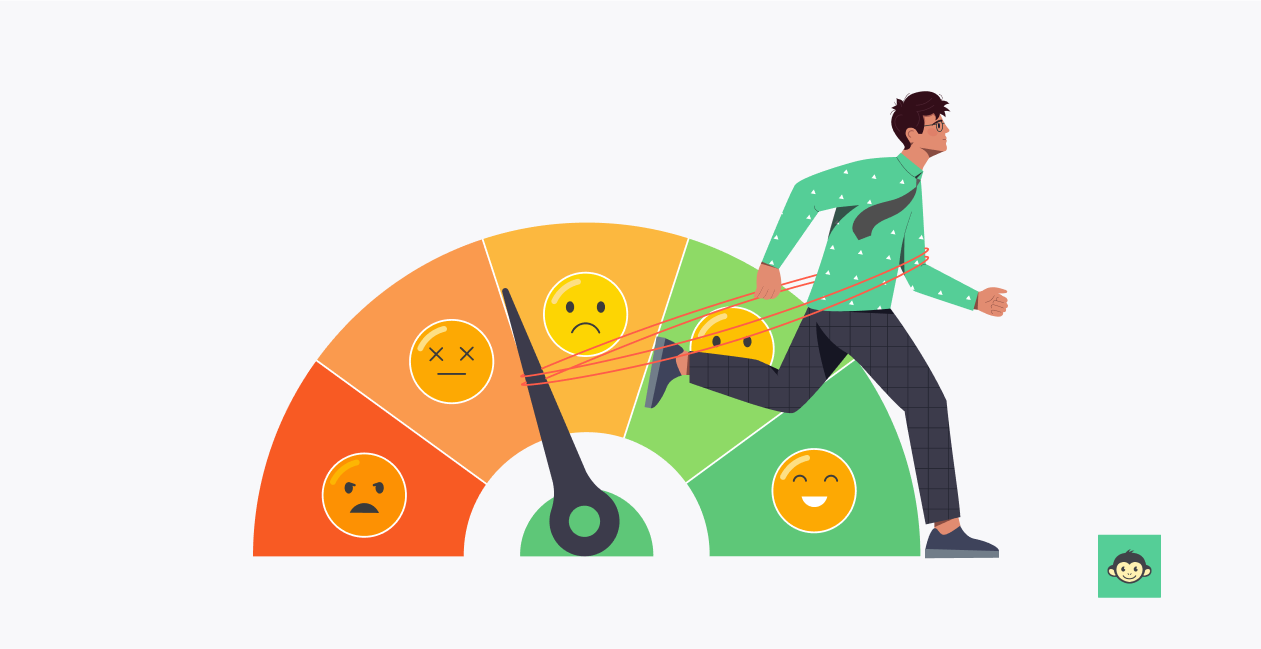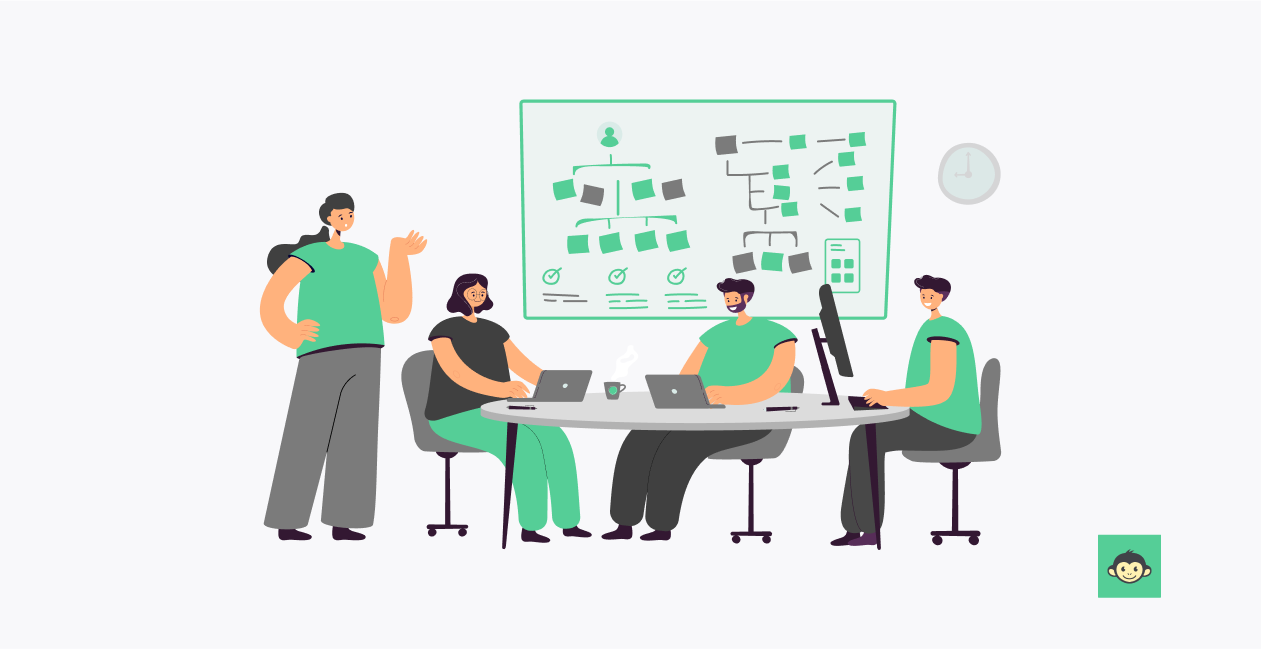How to improve job satisfaction and increase employee engagement in 2023?

In this evolving landscape, where the boundaries between office and home blur, job satisfaction and employee engagement have emerged as guiding stars in the corporate constellation.
The importance of ensuring that employees not only find fulfillment in their roles but also feel deeply connected to their organizations cannot be overstated. It's the compass that guides businesses through the challenges and opportunities of the future.
Yet, the path to achieving job satisfaction and employee engagement in this digital age is laden with complexities, akin to navigating a maze in the heart of the city. The challenges are real, but so are the possibilities. And that's where our journey begins.
In this blog, we will voyage through the dynamic landscape of 2023, exploring the importance of job satisfaction and employee engagement. We'll delve into the factors that influence them, dissect the strategies to enhance them and unveil the role of technology in this modern-day saga.
What is job satisfaction in the workplace?

Job satisfaction in the workplace refers to the contentment and fulfillment employees experience in their jobs. It encompasses their overall feelings about their work, including the tasks they perform, their work environment, and their relationship with colleagues and superiors.
Job satisfaction is a multidimensional concept influenced by various factors, such as job design, compensation, recognition, work-life balance, and organizational culture.
High job satisfaction often leads to increased employee engagement, productivity, and loyalty to the organization. It can be measured through surveys, interviews, and self-assessments to gauge employees' perceptions of their work experiences.
What are the 5 keys to job satisfaction?

Job satisfaction is influenced by a variety of factors, and while individual preferences vary, there are five key factors that consistently contribute to high job satisfaction:
1. Work-life balance
Achieving a healthy balance between work and personal life is crucial. Employees who have the flexibility to manage their work schedules and personal commitments tend to be more satisfied.
Employers can promote work-life balance through flexible hours, remote work options, and generous time-off policies.
2. Recognition and appreciation
Feeling valued and appreciated at work is essential for job satisfaction. When employees receive recognition for their contributions and efforts, it boosts morale and motivation.
Recognition can take the form of verbal praise, awards, bonuses, or promotions.
3. Career development opportunities
Employees seek opportunities for growth and advancement within their organizations. Providing training, mentorship programs, and a clear career progression path can enhance job satisfaction.
When employees see that their career goals align with their current roles, they are more likely to be satisfied.
4. Positive work environment
A positive workplace culture is vital for job satisfaction. A supportive, inclusive, and respectful environment fosters a sense of belonging and well-being.
Encouraging open communication, teamwork, and collaboration among colleagues contributes to a positive atmosphere.
5. Fair compensation and benefits
Fair and competitive compensation, along with comprehensive benefits packages, are fundamental to job satisfaction. Employees want to feel that their contributions are adequately rewarded.
Organizations that offer competitive salaries, bonuses, health insurance, retirement plans, and other benefits tend to have more satisfied employees. While these five keys to job satisfaction are essential, it's important to recognize that individual preferences and priorities may differ.
Employers should regularly seek feedback from employees and tailor their strategies to meet the unique needs of their workforce.
A holistic approach to promoting employee satisfaction that considers these factors can result in a happier, more engaged, and more productive workforce.
What are the 7 dimensions of job satisfaction?

Job satisfaction is a complex and multi-dimensional concept. While the dimensions of job satisfaction may vary slightly depending on the source, there are seven key dimensions that provide a comprehensive understanding of this concept:
1. Work itself
Job satisfaction often begins with the nature of the work. Employees are more satisfied when they find their job tasks meaningful, interesting, and challenging. Having a sense of purpose in their work can lead to higher satisfaction.
2. Workload and work-life balance
The amount of work and the balance between work and personal life significantly impact job satisfaction. Overwhelming workloads and a lack of work-life balance can lead to dissatisfaction.
3. Career growth
Employees seek opportunities for growth and advancement. Job satisfaction increases when individuals see a clear path for career development within the organization. This includes opportunities for promotions, skill development, and training.
4. Supervision and leadership
The quality of leadership and supervision plays a crucial role in job satisfaction. Employees are more satisfied when they have supportive and effective managers who provide guidance, feedback, and recognition.
5. Coworkers and social interaction
Positive relationships with coworkers and a sense of camaraderie contribute to job satisfaction. A friendly and collaborative work environment fosters a sense of belonging and well-being.
6. Employee benefits
Fair and competitive compensation, including salaries, bonuses, and benefits, is a key dimension of job satisfaction. Employees want to feel adequately rewarded for their efforts.
7. Organizational culture
The overall culture and values of an organization impact job satisfaction. A positive workplace culture that promotes fairness, inclusivity, and respect can enhance job satisfaction.
These seven dimensions provide a holistic view of job satisfaction, taking into account various aspects of the work experience. It's important to note that the relative importance of each dimension can vary from person to person.
Therefore, organizations should consider these dimensions and tailor their strategies to create a work environment that maximizes overall job satisfaction for their employees.
What are the 4 types of job satisfaction?

Job satisfaction is a complex and multifaceted concept that can be categorized into four main types:
1. Intrinsic job satisfaction
This type of job satisfaction is rooted in the nature of the work itself. Employees with high intrinsic job satisfaction find their job tasks inherently rewarding, challenging, and engaging.
They may derive pleasure and fulfillment from the work they do, feeling that it aligns with their personal interests and values. Intrinsic job satisfaction is often associated with a sense of purpose and passion in one's work.
2. Extrinsic job satisfaction
Extrinsic job satisfaction is related to external factors and rewards associated with the job. This includes aspects such as salary, benefits, job security, and working conditions.
Employees with high extrinsic job satisfaction are content with the tangible rewards and perks they receive in exchange for their work. While these factors are important, they may not fully compensate for low intrinsic satisfaction.
3. General job satisfaction
General job satisfaction encompasses overall feelings about one's job and work environment. It takes into account a combination of intrinsic and extrinsic factors, as well as the quality of relationships with coworkers and supervisors.
Employees with high general job satisfaction are content with various aspects of their jobs and feel a sense of well-being at work.
4. Life satisfaction
Although not strictly a type of job satisfaction, life satisfaction is closely linked to an individual's overall happiness and well-being, which can be influenced by their job. Employees who experience high life satisfaction tend to have positive feelings about their jobs as well.
Conversely, if job-related stress or dissatisfaction spills over into personal life, it can negatively affect life satisfaction.
These four types of job satisfaction provide a nuanced understanding of the factors that contribute to an individual's overall satisfaction with their work. It's important to recognize that job satisfaction is a dynamic and individualized experience, influenced by a combination of intrinsic and extrinsic factors, as well as personal values and circumstances.
As a result, organizations and individuals can take steps to enhance different aspects of job satisfaction to create a more fulfilling and rewarding work experience.
Benefits of having a satisfied workforce

A satisfied workforce is like a secret sauce that adds flavor and success to any organization. Here are six creative and witty benefits of having a content and satisfied workforce:
The productivity uprising
A satisfied workforce is like an army of well-fed, well-rested, and highly motivated soldiers. They march into the office every day, armed with enthusiasm, and wage a war against procrastination and inefficiency. The result? A productivity uprising that leaves the competition scrambling to keep up.
The great retention spell
Satisfied employees are like loyal fans at a rock concert – they don't want to leave the show. With their favorite band (your company) constantly delivering hits (employee satisfaction), they're under a spell of great employee retention. The cost of recruiting and onboarding new talent? It's like trying to convince them to switch concerts mid-show – nearly impossible.
Innovation fireworks
When employees are satisfied, their minds are free to wander in the fields of creativity. They don't just come to work; they come to ignite innovation fireworks. They'll brainstorm ideas that are so brilliant, they'll light up the market and leave competitors in awe.
Customer happiness wave
A happy workforce creates a ripple effect of joy that extends to customers. It's like a happiness wave, and who wouldn't want to surf on a wave of satisfied, enthusiastic employees?
Satisfied employees deliver top-notch customer service, turning customers into loyal brand advocates.
The stress buster shield
Satisfied employees are like superheroes with stress buster shields. They deflect workplace stress and keep the office atmosphere calm and pleasant. Less stress means fewer sick days, lower healthcare costs, and a happier, healthier workplace.
The profit party
Satisfied employees are the life of the profit party. They come to work with a smile, give their best performance, and leave no stone unturned to contribute to the company's success. The result? The profit margins start dancing to a tune that only satisfied employees can play.
A satisfied workforce isn't just an asset; it's the magic wand that transforms an ordinary company into an extraordinary one. It's the engine that drives productivity, innovation, customer satisfaction, and profitability.
So, if you want your organization to thrive and be the life of the business party, make sure your workforce is not just content but positively ecstatic about being a part of your team.
19 Ideas to improve job satisfaction in the workplace

Improving job satisfaction in the workplace is crucial for employee well-being and productivity. Here are 19 creative ideas to enhance job satisfaction:
- Flexible work arrangements: Offer options like remote work or flexible hours to promote work-life balance.
- Professional development: Invest in training and workshops to help employees grow in their roles and advance in their careers.
- Regular recognition: Implement an employee recognition program to celebrate achievements and efforts.
- Wellness initiatives: Promote physical and mental well-being through wellness programs, gym memberships, or meditation sessions.
- Meaningful work: Align tasks with employees' interests and strengths to make their work more fulfilling.
- Inclusive culture: Foster diversity and inclusivity to create a welcoming and supportive environment.
- Clear expectations: Provide clear job descriptions and performance expectations to reduce ambiguity.
- Feedback culture: Encourage open and constructive feedback from both managers and peers.
- Employee empowerment: Give employees autonomy to make decisions and contribute to company goals.
- Regular check-ins: Conduct frequent one-on-one meetings to discuss goals, concerns, and career aspirations.
- Team building: Organize team-building activities to strengthen relationships and improve collaboration.
- Financial wellness: Offer financial planning resources to reduce financial stress.
- Flexible benefits: Allow employees to customize their benefits packages to suit their needs.
- Mentorship programs: Pair experienced employees with newcomers for mentorship and guidance.
- Community engagement: Encourage employees to do volunteer work and community involvement to boost morale.
- Transparency: Keep employees informed about company news, goals, and challenges.
- Office redesign: Create a comfortable and inspiring workspace to improve the physical environment.
- Recognition wall: Establish a visible recognition wall to showcase employees' accomplishments.
- Personal growth: Support employees' personal development by providing resources for hobbies or interests outside of work.
By implementing these creative strategies, organizations can foster a more satisfying and engaging work environment, resulting in happier and more motivated employees.
How can you measure employee satisfaction at work?

Measuring employee satisfaction at work is essential for gauging the well-being and engagement of your workforce. Several effective methods can be employed to assess employee satisfaction:
- Surveys and questionnaires: Conduct regular employee satisfaction survey or questionnaires that include a range of relevant questions about job satisfaction, work conditions, relationships with colleagues and managers, and overall well-being. Ensure anonymity to encourage honest responses.
- One-on-one interviews: Engage in individual interviews or focus group discussions with employees to delve deeper into their concerns and opinions. These qualitative insights can complement quantitative survey data.
- Exit interviews: When employees leave the organization, conduct exit interviews to understand their reasons for departure and gather valuable feedback that can inform retention strategies.
- Employee net promoter score (eNPS): Similar to the Net Promoter Score used in customer satisfaction, eNPS asks employees how likely they are to recommend the organization as a place to work. It's a simple metric that provides insight into overall satisfaction.
- Performance metrics: Analyze performance metrics, such as productivity levels, attendance, and turnover rates. A drop in these metrics could indicate employee dissatisfaction.
- Observation and feedback: Encourage managers to observe employee behavior, provide feedback, and offer support. They can identify signs of job satisfaction or dissatisfaction through day-to-day interactions.
- Pulse surveys: Implement frequent, short pulse surveys to gather real-time feedback on specific topics or events. These quick surveys can capture immediate employee sentiments.
- 360-degree feedback: Collect feedback from peers, subordinates, and managers to gain a comprehensive view of an employee's performance and satisfaction levels.
- Social media and glassdoor reviews: Monitor social media platforms and employee review sites like Glassdoor for employee feedback and opinions about the organization.
- Benchmarking: Compare your organization's satisfaction scores to industry benchmarks or competitors to assess your relative performance.
- Suggestion boxes: Provide a means for employees to submit suggestions or concerns anonymously, encouraging open communication.
- Employee engagement software: Utilize specialized software that tracks and analyzes employee engagement data, providing real-time insights into satisfaction levels.
- Regular check-ins: Establish a company culture of regular check-ins between managers and employees to discuss concerns, provide feedback, and offer support.
By using a combination of these methods, organizations can effectively measure and understand employee satisfaction, allowing them to make informed decisions and implement strategies to enhance the workplace experience and retain a satisfied and engaged workforce.
How to create a perfect employee engagement action plan to improve employee satisfaction?

Creating a perfect employee engagement action plan to ensure employee satisfaction involves several key steps. Start by conducting regular employee surveys to gather feedback and identify areas for improvement. Establish clear communication channels to keep employees informed and engaged.
Offer opportunities for skill development and career growth to enhance job satisfaction. Promote a healthy work-life balance through flexible policies. Recognize and reward employee achievements to boost morale.
Foster a positive work environment by encouraging teamwork, inclusivity, and open communication. Lastly, regularly assess the effectiveness of your engagement initiatives and make necessary adjustments to ensure ongoing employee satisfaction and retention.
Conclusion
As we step into 2023, the pursuit of improved job satisfaction and increased employee engagement remains a top priority for organizations seeking success in a dynamic and competitive landscape. It's not just a nice-to-have; it's a strategic imperative.
By implementing the strategies and best practices outlined in this blog, organizations can foster a workplace culture where employees feel valued, motivated, and fulfilled. Whether through flexible work arrangements, professional development opportunities, or recognition programs, there are numerous avenues to enhance job satisfaction.
Remember, a satisfied and engaged workforce is the heart of any thriving organization. It fuels productivity, innovation, customer satisfaction, and profitability. As we navigate the challenges and opportunities of the evolving work landscape in 2023, investing in the well-being and satisfaction of your employees is not just a choice; it's a winning strategy.
FAQs
1. Why is job satisfaction and employee engagement important in 2023?
In 2023, job satisfaction and employee engagement are vital because they directly impact an organization's success. Satisfied and engaged employees are more productive, innovative, and loyal. They help attract and retain top talent, enhance customer satisfaction, and drive overall business growth.
2. What are the key challenges in improving job satisfaction and employee engagement in 2023?
Challenges include the evolving nature of work (remote, hybrid), maintaining a sense of connection and collaboration, addressing work-life balance, and adapting to changing employee expectations. Additionally, as technology advances, organizations must ensure that digital tools enhance rather than hinder engagement.
3. How can organizations measure job satisfaction and employee engagement effectively?
Effective measurement involves a combination of surveys, feedback mechanisms, and data analytics. Use employee surveys with carefully crafted questions to gauge satisfaction and engagement levels. Analyze turnover rates, absenteeism, and performance metrics. Regular one-on-one meetings and pulse surveys also provide real-time insights.
4. What role does leadership play in improving job satisfaction and employee engagement?
Leadership is pivotal. Leaders set the tone for the workplace culture, provide guidance, and create an environment of trust and support. Engaged leaders who communicate transparently, offer opportunities for growth and recognize employee contributions inspire and motivate their teams.
5. How can technology be leveraged to enhance job satisfaction and employee engagement in 2023?
Technology can facilitate remote work, offer learning and development platforms, streamline communication, and provide recognition tools. AI-driven analytics can identify trends and areas for improvement. However, it's essential to balance technology with human interactions to maintain a personal connection with employees.



